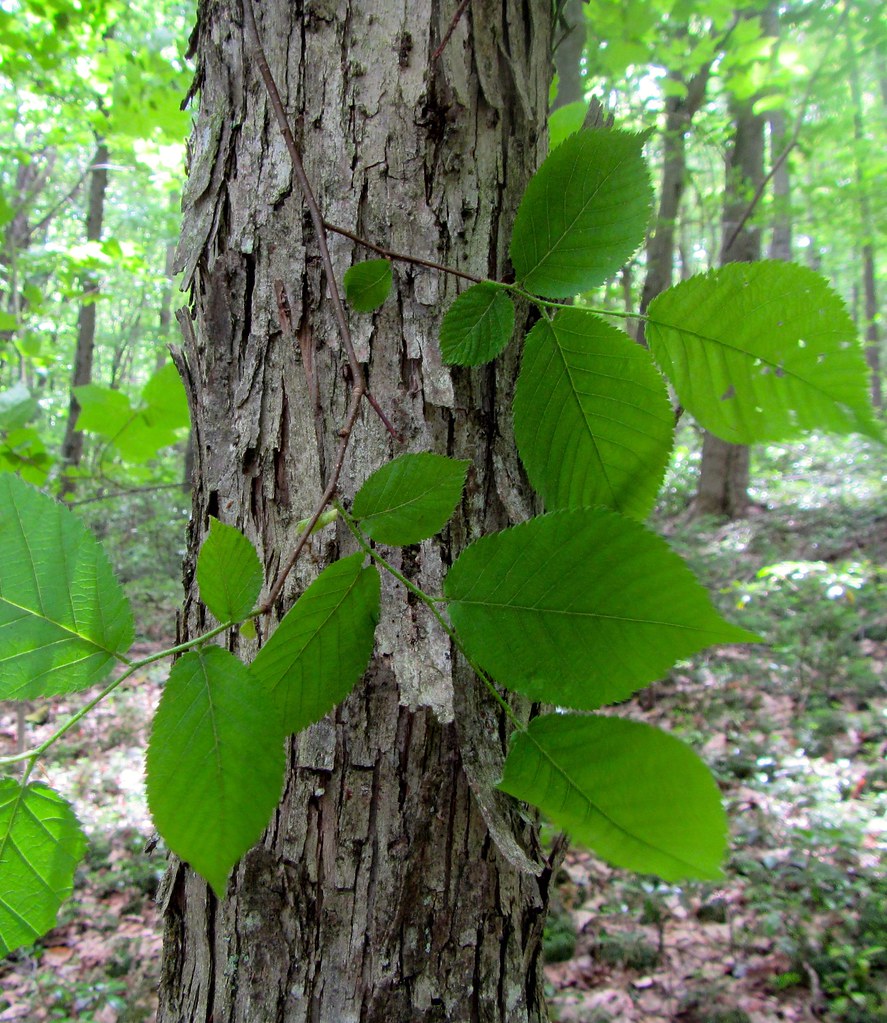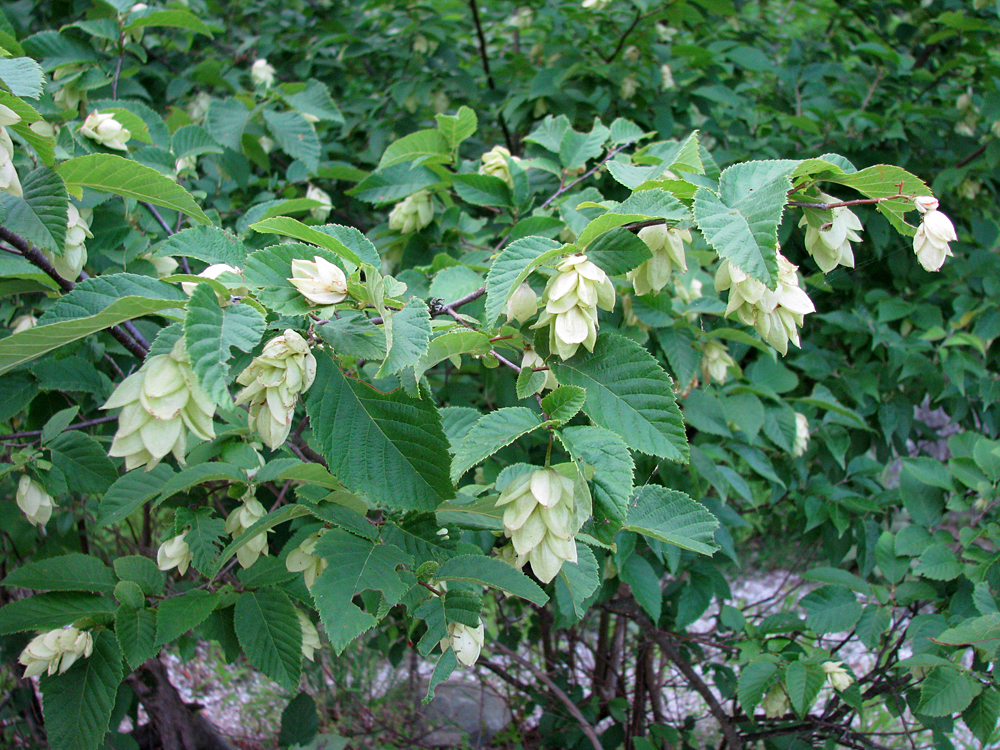Hophornbeam
Ostrya virginiana (Mill.) K. Koch
Description
Hophornbeam, also called hop hornbeam, ironwood or leverwood, is a medium size tree that typically grows to 35 feet, but may reach 50 feet in ideal conditions. ¹ It is a member of the birch family (Betulaceae) and is often confused with true birches. ¹ The trunk has brownish, scales bark. ² Leaves are alternate, 2 to 4 inches long, ovate, with sharply double-serrated margins and hairy on the underside. ² Flowers are monoecious, with male and female flowers on the same tree. Male flowers are in red catkins that overwinter, while the female flowers are produced in the spring on new growth. The flowers are wind pollinated. 6 Fruits form bracts that resemble hops giving rise to the common name.

Bark and leaves of hophornbeam, @ Boyer and McDowell, Maryland Biodiversity Project ³

Overwintering male catkins. @ J. Hill, Maryland Biodiversity Project ³
Flowering catkins of hophornbeam, @ A. Bradford*, Maryland Biodiversity Project ³
Distribution
It is distributed throughout eastern North America from Nova Scotia to Manitoba, south to Texas and east to Florida. ¹ It is also found in Mexico, El Salvador and Honduras. 4
In Maryland hophornbeam is found mostly on upland, rocky soils of the Piedmont and Western Maryland. ³

Native range of hophornbeam. USDA 4
Wildlife Importance
Th nutlet is used as winter food for several songbirds as well as pheasants, turkeys, grouse, squirrels and deer. ²
Economic Importance
The wood is strong and hard and was used for making sleigh runners and tool handles. ¹ Native Americans used the bark of hop hornbeam to make a tonic for toothache, sore muscles, and coughs. 7
Threats
Hophornbeam is relatively free of pests and disease. ² Gypsy moths can pose problems. ¹ It is intolerant to flooding. 4
Interesting Facts
- The wood of hophornbeam is very hard, exceeding that of oak and hickory. This leads to the common name of ironwood. 5
- Hophornbeam has wood that is so dense it does not float in water. 4
- Because the wood does not compress, it is used for making wooden longbows. 6
References
- North Carolina Extension: Ostrya virginiana
- USDA-NRCS Plant Guide: Hop Hornbeam
- Maryland Biodiversity Project: Hophornbeam
- USDA Forest Service, Silvics, Vol 2. Hardwoods: Ostrya virginiana
- Missouri Department of Conservation: Eastern hop hornbeam
- Home Stratosphere: What is an American Hophornbeam Tree?
- Bates College: Eastern Hophornbeam
Contributed by J. Hull
* Image used with permission of photographer.

